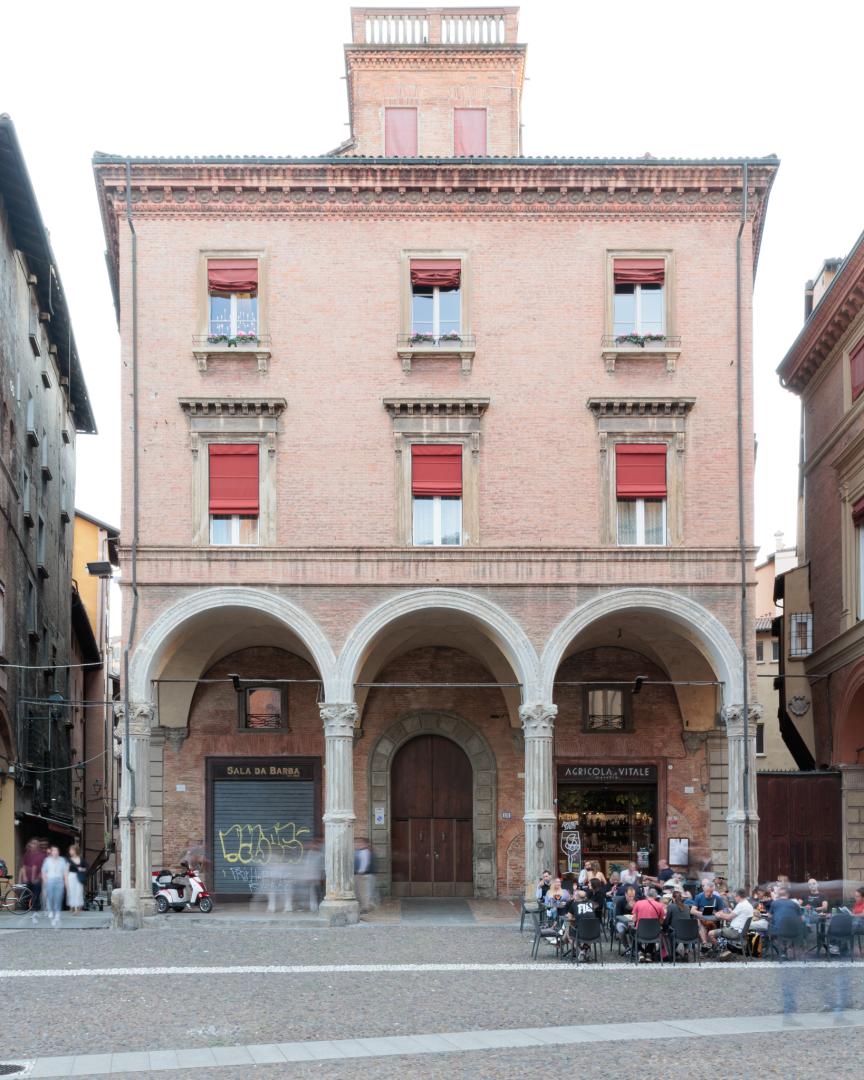The configuration of the reinforced column is also interesting, and in fact it is not unique amongst the various Bolognese porticoes. Starting from the narrower columns of the portico Dei Servi by Antonio di Vincenzo (end of the 14th century) (see fact sheet), the system can be found in the 15th century portico del Baraccano and again in Palazzo Bonasoni in Via Galliera (mid-16th century). In this example, however, the result is even more expressive as the moulded ring is applied to a slotted column. The presence of this element is normally explained by the need to conceal the connections between the two blocks comprising the column stem.
Sources
F. Ceccarelli, D. Pascale Guidotti Magnani, Il portico bolognese. Storia, architettura, città, Bologna, Bononia University Press, 2021, p. 85.
Photo: 1Cinquantesimo

